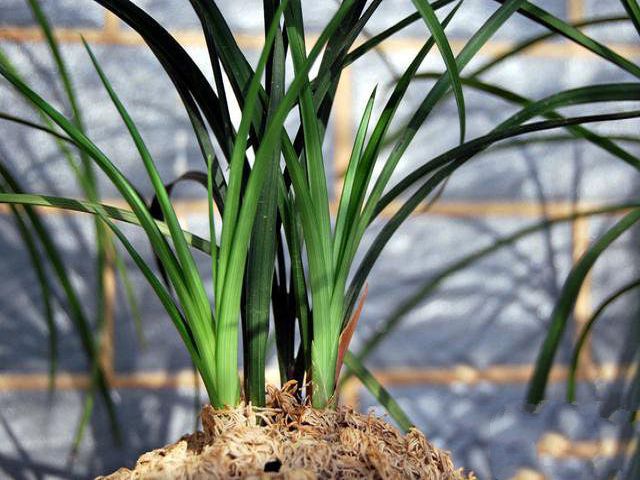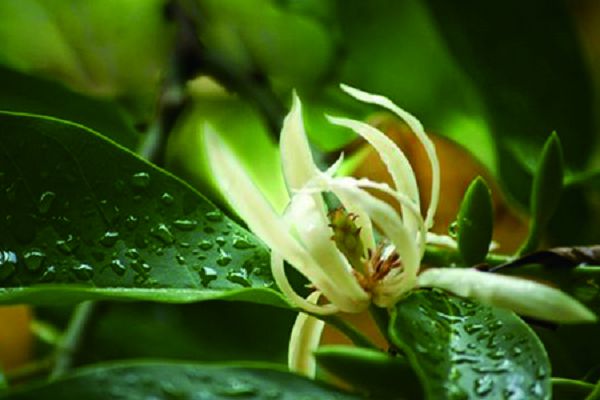Does the orchid need to see the sun?

Orchids need sunlight, when the light is not enough, the photosynthesis is not complete, thus affecting the growth, easy to lead to overgrown leaves, not blooming and so on, the ornamental value will be greatly reduced. But the light requirements of orchids are different in different seasons. Only by following its growth law, replenishing or reducing light in time, can orchids grow well and achieve the purpose of ornamental. With regard to the light intensity and duration of orchids, my views are as follows:
Light requirements of orchids in different seasons
1. Get as much sun as possible in winter
The light is weak in winter, orchids are mostly in the dormant stage, and their growth is basically at a standstill stage, so they should bask in the sun as much as possible. On the one hand, it can raise the temperature of the microenvironment, avoid frostbite when the temperature is too low, and also help to improve the color of the leaves. On the other hand, many orchids have buds in winter, and more exposure to the sun is beneficial to bud growth. It is easy to blossom smoothly and produce high-quality flowers. Orchids with sufficient light will also produce flowers that are particularly fragrant. But should note that some orchid leaves are not sun-resistant, winter should also be a small amount of shading, or avoid the strong light at noon, more sun in the morning and afternoon. For example, when the light is strong, the leaf color is easy to change. A small amount of shading at noon in winter can ensure that the leaves are bright and green.
2. Bask properly in spring
Spring is the peak growing season for orchids. Many orchids blossom in spring and grow new seedlings after flowering. Therefore, during this period of time, we should ensure a certain amount of light, so that full photosynthesis, high quality of flowering, more new seedlings and fast growth. However, with the rise of temperature in spring, the light intensity is also increasing step by step, we should pay attention to weather changes, appropriate shading, to prevent sunburn leaf surface. In general, when the maximum temperature is not higher than 20 degrees, you should bask in the sun. When the highest temperature is higher than 20 degrees, you should gradually block out the light, or avoid the bright light at noon. When the highest temperature is higher than 28 degrees, no matter what kind of orchid, you must protect it from the sun or choose a period of weak light to bask in the sun. Especially in the southern region, the sun is already relatively strong in March and April, so it is necessary to shade the sun early.
3. Get less sun in summer
After the beginning of summer, the sun should be exposed to orchids as much as possible before ten o'clock in the morning, which is conducive to growth and flower bud differentiation. The sun in the morning is particularly beneficial to flower bud differentiation, so there are conditions to sun, no conditions to create conditions to sun. Shading 50% to 80% after 10 o'clock to prevent excessive light from causing some unnecessary trouble, inconvenient shading can be maintained in astigmatism. You can also bask in the sun after six o'clock in the afternoon, but at this time you can bask in the sun as soon as you can, and you can avoid it if you don't have any conditions. When the highest temperature is higher than 35 degrees, except for the morning sun, orchids can be maintained in the all-overcast environment, and then gradually increase the light after the heat. The shading intensity of orchids maintained in different environments in summer is not the same. If the maintenance in the open air, well-ventilated environment, shading intensity can be weaker. If the maintenance is indoor and the ventilation is not good, the shading intensity will be stronger. In short, let orchids bask in the sun in summer and change flexibly according to weather changes.
4. Get more sun in autumn
After the Beginning of Autumn, the flower buds of most orchids will gradually emerge and enter the flower bud incubation period. At this time, light is also very important. Sufficient light can make the flower buds grow healthily to cope with the cold winter. Autumn temperature and light intensity are going downhill, basking in the sun and spring, on the contrary, should gradually increase the intensity and time. Just the Beginning of Autumn time is still relatively strong, properly shaded or avoid the strong light at noon, wait until late autumn, the light is relatively weak, you can bask in the sun all-nature, together with winter, so that orchids can fully enjoy the warmth of light.
The harm of orchids not basking in the sun
If there is not enough light in the process of raising orchids, what will be the consequences? First of all, the leaves become thin and long, the color of the leaves become lighter, and the sense of gloss fades or disappears. Secondly, it is not easy to blossom, only leaves do not see flowers. The third point is the decline in resistance, which is easy to breed diseases and insect pests. The fourth point is that the growth is slow, the new seedlings are few, and the growth is slow.
Which orchids are not suitable for sunbathing?
The rule of basking in the sun mentioned above is aimed at healthy orchids. If orchids are unhealthy or have just been put on the pot, basking in the sun cannot be treated in accordance with the above and should be treated differently. If the orchid is just on the pot, it should be maintained in the shade now and wait for the basin to gradually increase the light intensity. If it is a sick orchid, it should be kept in astigmatism or semi-shade, with medicine timely treatment, waiting for recovery.
Conclusion: raising orchids must bask in the sun, and in different seasons, orchids have different requirements for light, which are constantly changing. Different varieties of orchids have different lighting requirements, but the difference is not very big, basically follow the lighting requirements of the four seasons described above, only need to adjust slightly according to their own orchid varieties.
Related
- Is the orchid suitable for indoor use? Is it good for the body?
- How to prevent the empty root of orchids?
- What to do after the crab claw orchid is withered?
- Why are the leaves of orchids always yellow? Fertilizing and watering.
- Can the root of the gentleman orchid be saved if it is rotten?
- Diagnosis and treatment of cotton-blowing beetle insects in Cymbidium
- There is a way for a gentleman's orchid to rot.
- What is the most suitable temperature and humidity for the orchid?
- How to raise a gentleman's orchid? Cultivation techniques of Cymbidium
- How to prepare the nutritive soil for the cultivation of Cymbidium



